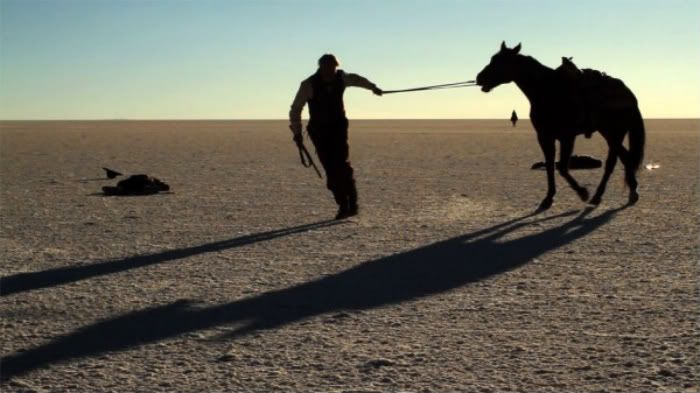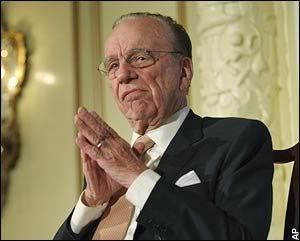Van Dusen described himself as a phenomenologist, and said, "The phenomenologist makes a profound effort to capture, describe, and understand experience just as it is. His work is really protoscientific, coming before science. ... In many respects it is unfortunate that the science of psychology imitated the methods of physics, because it long ago had to abandon looking at the psyche and it doesn't do too well even now with bits of observable behavior."
When the scientific study of the mind began in the late 19th century, its most common method of research was introspection: the psychologist looked into his own mind to see what was there. Introspection is regarded in academic psychology these days as a quaint relic of the past, like phrenology. While there are dissenters, behavioral psychology still rules. Even observing outward behavior is, as Van Dusen noted, quickly passed over. Most scientists are desperately eager to spin theories, since those are what get attention, publication, and grants. Just seeing and recording what is casts a small shadow in the competitive professional world. But Van Dusen was an introspection revivalist.

The Natural Depth in Man isn't concerned only with the phenomena of schizophrenia. As the title suggests, it explores all sorts of mental phenomena that reveal inner aspects of consciousness. They include what he calls self-reflection, or paying attention to the seemingly irrelevant words and images that pop into our minds without invitation; the hypnogogic state, or twilight between wakefulness and sleep; dreams; and spiritual experiences.
Van Dusen writes:
One of my underlying purposes is to make these regions of the psyche accessible and usable to others. ... Though I am a clinical psychologist, I would like to see mental health experts become less necessary as people find how they can understand themselves. People are generally too impatient and too ready to impose meanings on their psyche to learn from it. And unfortunately, the psyche cannot help but speak a language richer than our understanding. I'd prefer that persons find a modicum of understanding through themselves than a greater wisdom from the purchased friendship of experts.
His commitment to phenomenology sometimes deserts him, especially in his chapter on dreams. Psychologists are understandably fascinated by dreams, and apparently none has ever been able to resist the temptation to theorize about them. Even Van Dusen swallowed the notion of the Gestalt therapists who were all the rage at the time he wrote this book, the mid-'70s.
According to the Gestalt wizards, everything in your dream represents an aspect of yourself. You dream of walking through a door and notice the doorknob -- "become that doorknob!" the therapist orders in the post-dream debriefing. Seems like bollocks to me, but then I have no theory of dream interpretation, so who knows?
The book's outstanding chapters are about madness and spiritual experience, the latter of which I will take up in a future post. His description of experiences with psychotic patients is starkly gripping.
And, I must warn, disturbing. In all seriousness, do not read this chapter if you are undergoing mental turmoil or suffering major depression. Save it for a time when the winds of the mind blow gently.
It's a commonplace that the mad live in a world of their own, but no one that I know of writes of it as well as Van Dusen: "The mind slips out of gear and no one is around to care about its output. The machine clanks and bangs in its habitual way. There are no stresses, no should/oughts, no hope, no fear. Such a machine would not react if you pointed a loaded gun at its head. Gun. Bang, bang, what's the difference?"
A psychotherapist once told me that those who are long-terms guests of mental hospitals aren't necessarily more "insane" than others who work out their problems as outpatients or even on their own -- the psychiatric ward patients are the ones who have simply given up, he said. Van Dusen implies something similar: "In the shorthand of the hospital staff these people were called sitters. That was their life's occupation, sitting."
A number of other observations will further underline the nature of madness, even in its lesser degrees. Mad people are relatively useless both to themselves and to others. [His emphasis.] These two forms of uselessness are essentially the same thing. Those who are useless to themselves are usually useless to others and vice versa.

Madmen turn in on themselves in a variety of ways. One common way is to get locked into their own symptoms. ... The depressed get locked into their own mood. They can barely perceive or interact with others. Their own mood pulls them in like a giant magnet. Psychotics, the real madmen, often bottle up their concerns in some story they want others to join in.
The life space of madmen is constricted. For the sitter the life space might not include even the chair he sits on. ... Contrast this with the gifted normal's life space that includes complex inner events, family, occupation, friends, a hobby, involvement with service clubs, and a careful following of events overseas.
The most chilling aspect of madness that Van Dusen investigated is hallucinations. Some schizophrenics see things, or see them in a way, that normals don't.
More still hear voices. These are not the occasional "little voices" in our minds I think we all hear from time to time, meaningless phrases or our own voice speaking words we read in a book. Madmen hear voices as loud as everyday speech, or louder. The voices are usually unfriendly, often threatening.
Almost all patients had private terms of their own for these experiences. The Other Order, The Eavesdroppers, etc. ... Most patients reported that the other world introduced itself itself suddenly to them. One man was riding a bus and he heard a piercing scream. He pleaded for it to come down in volume, and it did. One woman was just working in her garden and a kindly man started talking to her when no one was around. One alcoholic heard voices coming up a hotel light well. When he listened he heard them plotting his death. ...

For most persons hallucinations ushered in a host of dreadful experiences. ... They found that the voices could easily gang up on them, literally putting them through hell. As one woman said with great feeling, "You can't have twenty people screaming at you constantly without going to pieces in a little while." Very often alcoholics who have really been living it up find they are tortured by others. Voices come out of ventilators and odd places and comment that the person is a worthless bum that should be killed. One man went through ten days of loud disputes as to how they would kill him. They had a gun -- he could hear its hammer fall -- a hangman's rope, a flame for burning, etc. This condition is experienced by many alcoholics who finally kill themselves to get it over with.
Patients with some grip on rationality who have intense hallucinations search for something, anything, that will get their tormenters to go away.
Prayer was often tried but to no avail. The very negative voices didn't like religious things, and they could manage to foul up Bible reading or prayers by snatching away thoughts. Patients who tried various ways of placating voices, doing as they suggested, found the voices were taking over and ruining their lives. Many tried vitamins, a change of scenery, various symbolic gestures (thick padding over the heart, keeping crosses around them, etc.) but these didn't work.
Apparently voices stop only during sleep. They often reappear at the moment of awakening. If they decide to keep one awake, it's good-bye to sleep.
These quotations out of context possibly make Van Dusen's attitude toward patients sound cold and uncaring, but it's just the opposite. He didn't sentimentalize madness, but he empathized with it. He paid his patients the tribute of taking their experiences seriously, as something just as real to them as ordinary experience, albeit far more painful.
Van Dusen even talked to patients' hallucinations, with the patient as a "medium." He found the hallucinations could carry on a conversation, although often the voices were quarrelsome and ridiculous. One patient's hallucination claimed he could read Van Dusen's mind. Van Dusen put this to the test and found that the hallucination was lying.
Some hallucinations seemed to be relatively benign, even positive. Van Dusen calls them "higher-order" hallucinations, compared with "lower-order" ones. He says dealing with lower-order hallucinations "is like dealing with mean drunks." But "the higher order is just the opposite. Whereas the lower attacks the patient's will, the higher order acts out of great respect for the patient's will. One man experienced the higher order as a sun in the sky at night. When he felt fear of the sun it would withdraw."
An ardent student of
Swedenborg, Van Dusen almost certainly believed that hallucinations were the voices of spirits -- mostly the degraded spirits who inhabit a bleak region of the astral plane and get their kicks from making trouble for people on Earth.
Allan Kardec, the founder of Spiritism (not the religion of Spiritualism) and to my way of thinking the greatest of all experts on the nature of non- and semi-corporeal beings, said, "There are spirits of all degrees of goodness and of malice, of knowledge and of ignorance. ... The superiority or inferiority of spirits is recognized by their language: the good counsel only good, and say only good things; everything about them proves elevation; the bad deceive, and all their words bear the marks of imperfection and ignorance."
Wilson Van Dusen helps us understand our fellow men and women victimized by their own character defects and choices, but perhaps even more, by spirits who have turned away from God's grace.


















